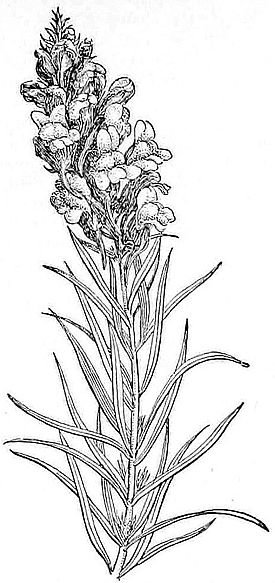strosity called peloria is sometimes seen in this plant, the flower presenting five spurs and five usually imperfect stamens.
TOADSTOOL. A fungus of the group Basidiomycetes (q.v.), whose fructification is usually a stalk bearing a cap. See Fungi, Edible and Poisonous; Mushroom.
TOAST (OF. toste, from ML. tosta, toast, Lat. fem. sing. of p.p. of torrere, to dry; connected with Gk. τερέσθαι, teresthai, to become dry, Skt. tarṣ, to thirst, and ultimately with Eng. thirst) . Originally the name given to bread dried or scorched before the fire. As early as the sixteenth century toast formed a favorite addition to English drinks, especially sack and punch. The application of the word to a lady whose health is drunk, and thence to any sentiment mentioned with honor before drinking, is said to have originated from an incident described in The Rambler (No. 24), as having happened at Bath in the eighteenth century, when it was the fashion for ladies to bathe publicly, in elegant dresses made for the purpose. “It happened that on a public day a celebrated beauty of these times was in the Cross Bath, and one of the crowd of her admirers took a glass of the water in which the fair one stood, and drank her health to the company. There was in the place a gay fellow, half fuddled, who offered to jump in, and swore, though he liked not the liquor, he would have the toast” (meaning the lady). In the later sense, the word has been adopted both in French and German.
TOBA, tō′bȧ (opposite, so called by the Guarani, as living on the opposite or western bank of the Paraguay). A powerful and savage people of Guaycuran stock, the most important tribe of the Chaco region of Northern Argentina. They rove along the Pilcomayo and Vermejo rivers. Their language is a dialect of that formerly spoken by the Abipone (q.v.), whom they exterminated about a century ago. They hunt and fight on horseback with the lance and bow, and are warlike and untamably hostile to all whites who attempt to enter the region.
TOBACCO (Sp. tobacco, tabaco, from the Carib name, of uncertain meaning; perhaps the name of the pipe smoked by the Indians, or of the tubes into which the leaves are rolled for smoking, or the Haitian name of the plant, or the old name of the island now called Tobago, near Trinidad, or the name of a province Tobaco, said to be in Yucatan), Nicotiana tabacum. A plant of the natural order Solanacæ. It has broad leaves, terminal panicles of flowers, and two-celled, five-valved fruits (many-seeded capsules). The numerous varieties differ more or less in the size and form of the leaves, and in the form and color of the flowers. Its generic name is in honor of Jean Nicot, who introduced it into France. Whether the use of tobacco as a narcotic was known in the East before the discovery of America is somewhat doubtful.
Probably the habit has been long practiced in China, but it is not certain. If it was so, the custom did not extend among neighboring nations, whereas, on the introduction of the use of tobacco from America, where the Indians have smoked the leaves since remote antiquity, it rapidly extended throughout Europe, and soon became extensively prevalent among Oriental nations. The Indians used it in their important transactions. Thus the calumet (q.v.), or pipe of peace, is indispensable to the ratification of a treaty; and smoking together has even greater significance of friendship than eating together has among the nations. Tobacco seed was first taken to Europe by Gonzalo Fernandez de Oviedo, who introduced it into Spain, where it was first cultivated as an ornamental plant, till Nicolo Manardes extolled it as possessed of medicinal virtues. It was introduced into Italy in 1560. Its use as snuff soon followed its introduction for smoking. There is no reference to the use of tobacco in Shakespeare, yet it is certain from other evidences that it then was well known in England, although, on account of its high price, its use was


